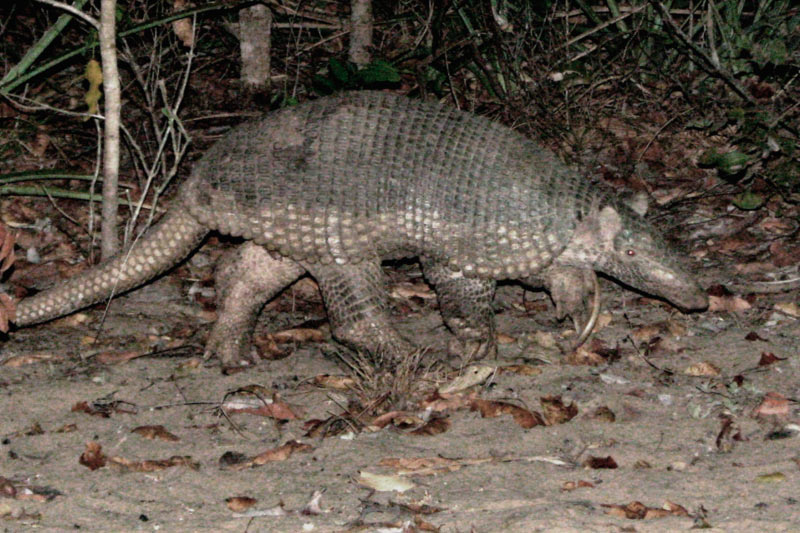The striped hog-nosed skunk is part of the same family as the American skunk.
Click to learn more
Distribution
The species is found in southern Mexico, in northern Colombia, Venezuela and Peru. In Brazil, it is present from the northeast to the state of São Paulo, occupying the central zone of the country, in the biomes, Cerrado, Caatinga and around the Pantanal (although this is rare).
Features
The striped hog-nosed skunk is a small animal, between 30 and 52 centimeters in body length, with a tail measuring between 14 and 30 centimeters. It weighs between 2 and 4 kilograms. The coat is black or dark brown in color, with a white stripe emerging from the head towards the tail, and dividing itself into two stripes along the body. These markings vary greatly among individuals.
Behavior
The striped hog-nosed skunk is more active in the late afternoon and evening. It is a terrestrial and solitary animal, only found in pairs during breeding season, and inhabits areas of open vegetation, such as fields and savannahs, avoiding dense forest regions. They often make use of holes dug by other species, or dig their own holes to serve as dens or while seeking food. When the striped hog-nosed skunk feels threatened, the perinanal glands produce and squirt an unpleasant volatile substance with a very strong odor. The striped hog-nosed skunk reacts aggressively when encountering other species such as crab-eating foxes, maned wolves and ocelots, among others.
Food
This species is omnivorous and insectivorous, feeding on insects and other invertebrates, small vertebrates and fruits. Some striped hog-nosed skunks have been recorded feeding on carcasses.
Reproduction
The gestation period lasts about 60 days, with females giving birth to four or five cubs at a time. Little is known about the reproductive habits of this species.
Conservation
They are considered as being of “least concern” both on the national list of ICMBio and by the IUCN.
Threats
The main threats to the species are being run over by vehicles, forest fires, habitat loss, hunting and conflicts with domestic animals.

















